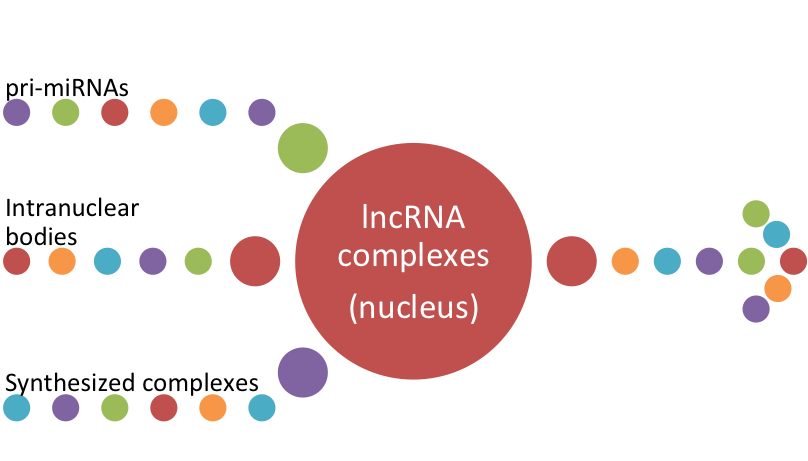
Role of Long Noncoding RNAs in Breast Cancer: Are New Markers for the Cure?
Written by Prashanth Suravajhala. Published with permission.
Majority of the eukaryotic genomes do not code for proteins, i.e. there are regions that might originate within the organisms or tissues without coding potential. If they do not code, it was earlier supposed to be of disinterest as they wouldn’t be associated with any disease. However, the last decade has seen advances in the field with certain (non-coding) RNA molecules transcribed; regulate expression of genes and further known to affect the transcription and cell cycle of diseased organism. A class of such non-coding RNAs identified during the last decade is long non-coding RNAs (lncRNA) that are known to play a role in diseases particularly cancer. What ails breast cancer in terms of lncRNAs? Are there such molecules associated with breast cancer? If so, can these be used as prognostic or diagnostic markers? Can these candidate markers be used for prevention or treatment of breast cancers?
Yes, says the research paradigm! Studies have demonstrated that the changes in lncRNA expression in tissues have been associated with metastasis, tumorigenesis of cancers. If such tissue specific expression patterns are found, a clinically beneficial possible biomarker could be made available for treatment (See Figure 1 below). Such expression levels are examined largely by RNA-Seq (transcriptomic) studies which further shed light on their biological functions even as they further provide information on discovering potential therapeutic targets. Having said this, there is a remarkable scope to understand breast cancer specific lncRNAs towards:
- Identification of markers to distinguish normal from tumor cells.
- Understanding etiology, pathology stages and ascertaining new therapeutic targets.
- Applying functional proteomic strategies for sub-tissues of potential clinical interest.


Figure 1 (a): The lncRNAs are synthesized, form complexes (primary miRNAs etc.) from various intranuclear bodies as a part of transcriptional events. They are usually more than 200 and maximum of 10k bases in length. (b) Outside nucleus, in the cytoplasm they interact with various proteins by the advent of RNA-binding complexes. If lncRNA binds to a known breast cancer diseased gene (for example, BRCA1), then such candidates can be further validated for marker studies.
Select references of interest
- Liu Y, Sharma S, Watabe K. Roles of lncRNA in breast cancer. Front Biosci (Schol Ed). 2015 Jun 1;7:94-108. Review. PubMed PMID: 25961689.
- Wang G, Liu C, Deng S, Zhao Q, Li T, Qiao S, Shen L, Zhang Y, Lü J, Meng L, Liang C, Yu Z. Long noncoding RNAs in regulation of human breast cancer. Brief Funct Genomics. 2015 Nov 18. pii: elv049. PubMed PMID: 26582840.
- Vikram R, Ramachandran R, Abdul KS. Functional significance of long non-coding RNAs in breast cancer. Breast Cancer. 2014 Sep;21(5):515-21. doi: 10.1007/s12282-014-0554-y. Epub 2014 Jul 20. Review. PubMed PMID: 25038622.

Leave a comment
This site is protected by hCaptcha and the hCaptcha Privacy Policy and Terms of Service apply.